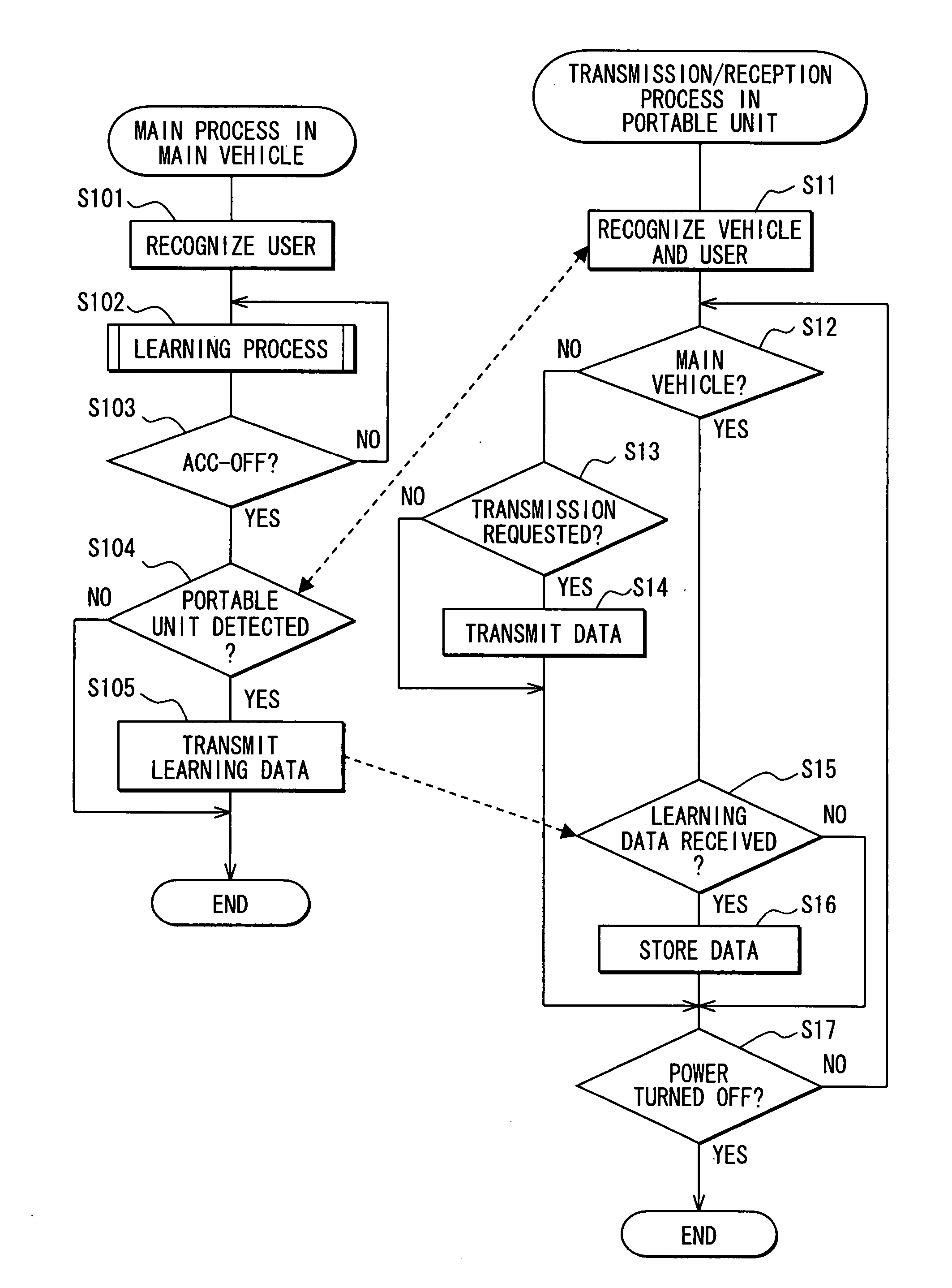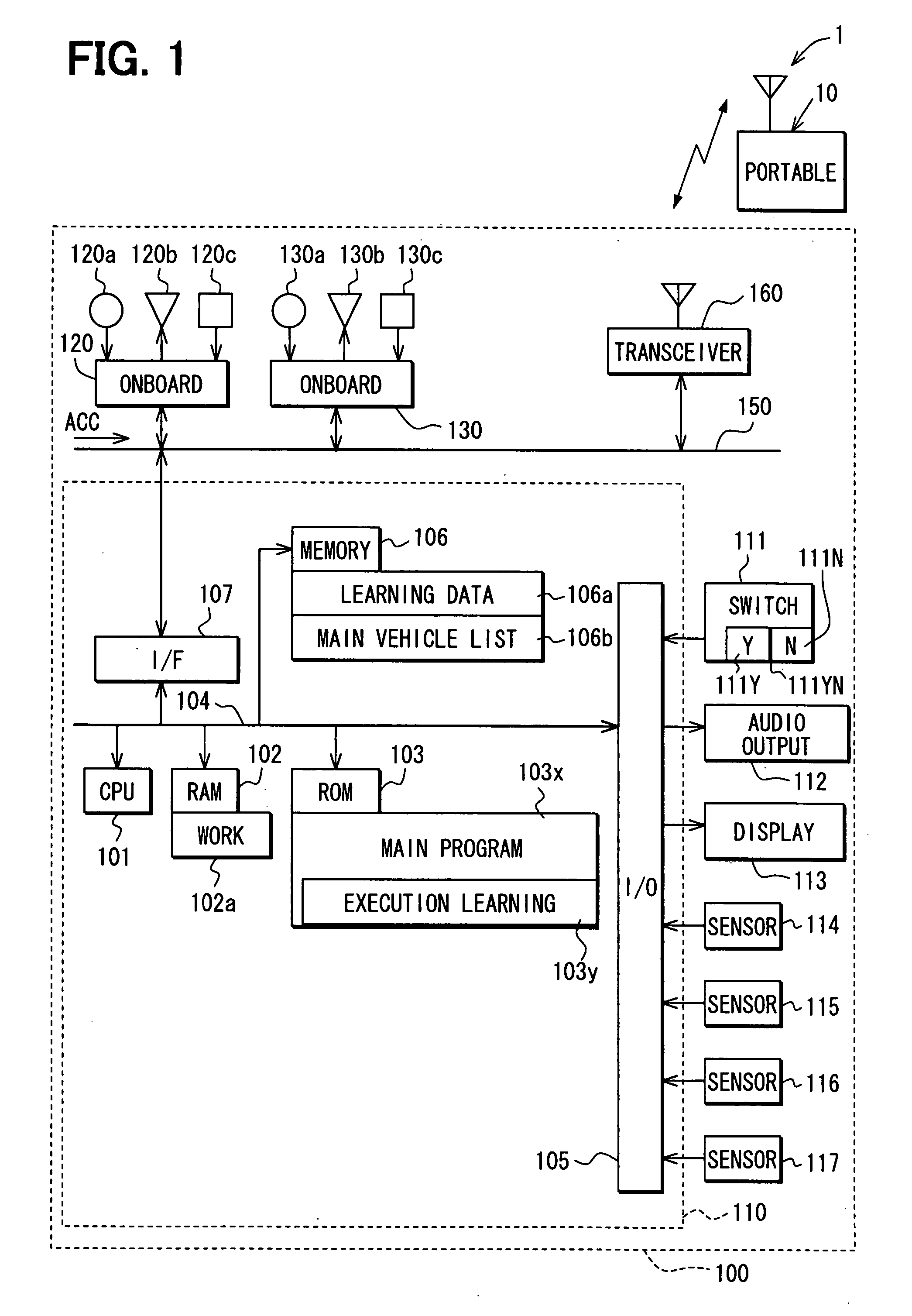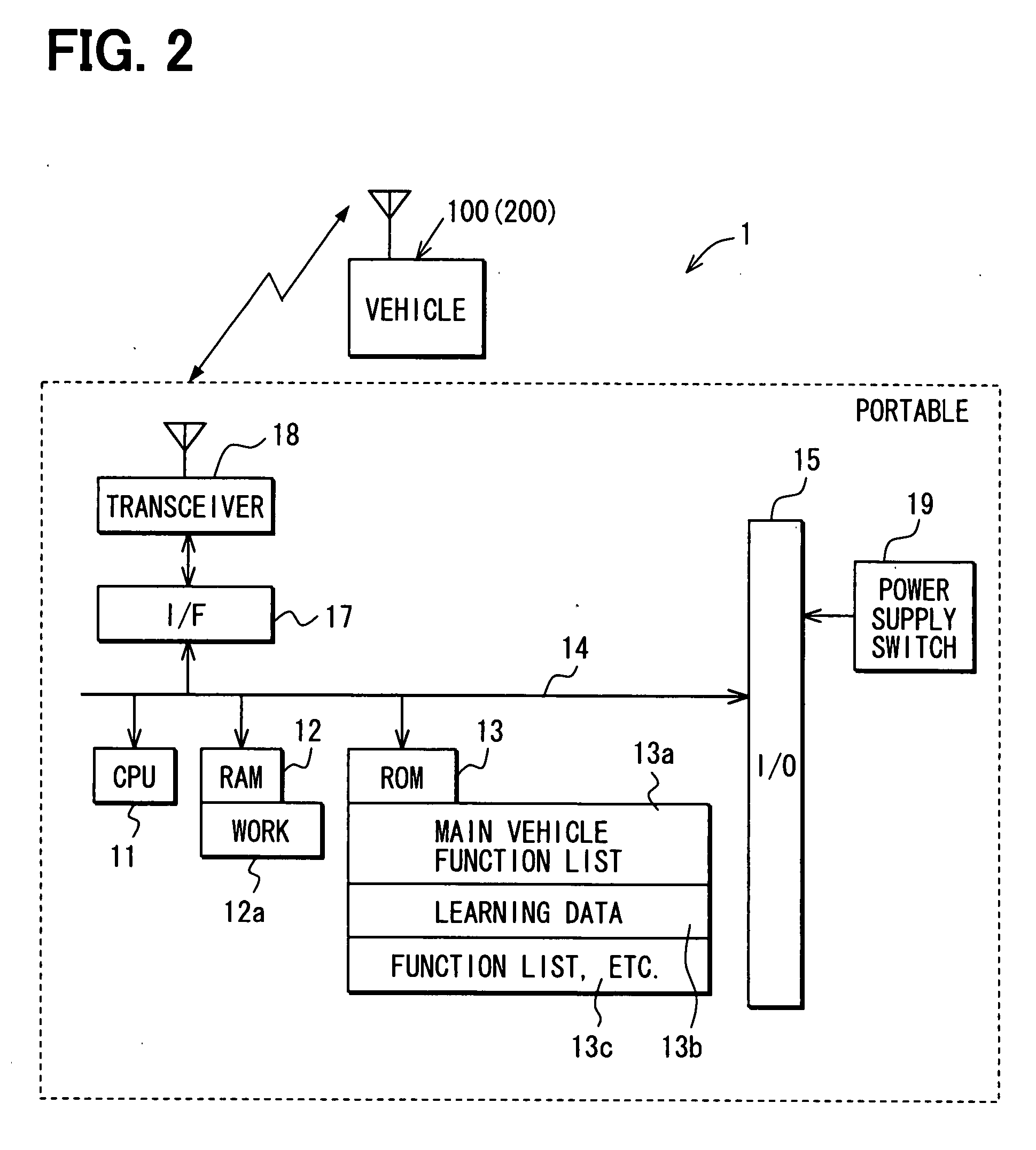User assistance system for vehicle
a technology for users and vehicles, applied in the field of user assistance systems for vehicles, can solve the problems of driver discomfort, unawareness, and inability to use a useful function not provided for the vehicle, and achieve the effect of facilitating recognition, stimulating positive use, and effective function
- Summary
- Abstract
- Description
- Claims
- Application Information
AI Technical Summary
Benefits of technology
Problems solved by technology
Method used
Image
Examples
first embodiment
[0046]FIGS. 1, 2, and 3 schematically show an electric block diagram of a vehicle communication system (user assistance system for vehicle) according to a first embodiment of the invention. A user assistance system for vehicle 1 shown in FIGS. 1, 2, and 3 includes a portable information terminal (wireless information terminal hereafter referred to as a portable unit) 10 and a vehicle 100 or 200 capable of wirelessly communicating with the portable unit 10. According to the embodiment, the vehicle 100 is familiar to a user owning the portable unit 10 and is hereafter referred to as a main vehicle. The vehicle 200 is unfamiliar to the user and is hereafter referred to as a sub vehicle. The invention allows the user having the portable unit (information relay means) 10 to recognize a functional difference between the familiar main vehicle 100 and the sub vehicle 200 the user attempts to drive.
[0047] The main vehicle (first vehicle) 100 is provided with onboard devices 120 and 130, and...
second embodiment
[0129]FIGS. 11, 12, and 13 schematically show electric block diagrams of the user assistance system for vehicle according to the second embodiment of the invention. The mutually corresponding parts of the user assistance systems for vehicle in the first and second embodiments are designated by the same reference numerals and a description is omitted for simplicity. A user assistance system for vehicle 1′ in FIGS. 11, 12, and 13 includes an information center (information relay means) 20 and vehicles 100 and 200 that are wirelessly communicable with the information center 20 via a wireless communication network. According to the second embodiment, similarly to the first embodiment, the vehicle 100 is a predetermined reference vehicle (main vehicle) to which a user is familiar. The vehicle 200 (sub vehicle) is unfamiliar to the user and differs from the reference vehicle 100. According to the user assistance system for vehicle 1′, the user, when getting in the sub vehicle 200, can rec...
PUM
 Login to View More
Login to View More Abstract
Description
Claims
Application Information
 Login to View More
Login to View More - R&D
- Intellectual Property
- Life Sciences
- Materials
- Tech Scout
- Unparalleled Data Quality
- Higher Quality Content
- 60% Fewer Hallucinations
Browse by: Latest US Patents, China's latest patents, Technical Efficacy Thesaurus, Application Domain, Technology Topic, Popular Technical Reports.
© 2025 PatSnap. All rights reserved.Legal|Privacy policy|Modern Slavery Act Transparency Statement|Sitemap|About US| Contact US: help@patsnap.com



